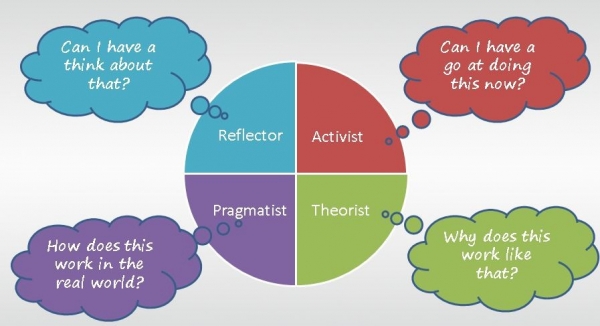The concept of learning styles generally refers to consistent differences in how individuals engage with learning content (Adey, Fairbrother, & William, 1999) and is widely used in education. People have different strengths, talents, work styles and interests and learning style and questionnaires can help us determine how a person processes information (Honey & Mumford, 1992). This in turn enables us as coaches to tailor our coaching session according to the individual’s requirement. Or so it should.
The literature points out a few problems with using learning styles. There is no standardised definition (Curry, 1983) of what a learning style is and questionnaires are highly subjective as they rely on the honesty of the client; there is no way to tell if they have answered truthfully or have simply responded in a favourable way. It’s considered a risk to use tools such as the Learning Styles Inventory (LSI) due to its questionable psychometric validity and reliability (Riding & Sadler-Smith, 1997).
Furthermore, there is a high risk of pigeon-holing (Adey et al., 1999), which can lead to a unilateral approach and incomplete supply of information. Our brains, styles and habits can change over the years and by identifying one person with one single learning style we, as coaches, might deny them the opportunity to expand their horizon and unintentionally limit them. The human brain is so complex that dividing the entire population into four compartments seems a bit inadequate to me.
Even knowing all this, I wonder if the whole concept of learning styles can be dismissed so easily, or if they could still be useful. Honeybourne (2006), a British education consultant, claims that the “recognition of a range of learning styles allows teachers and coaches to present […] skills in a way that best suits the needs of the learner.” The convenience and the simplicity of the learning styles concept cannot be denied, although the individual’s motivation plays a massive role in the learning process.
In summary, the idea of learning styles is splendid in theory. If used as a conversation starter it can be extremely useful, as long as we don’t put the client in a box without discussion or a more holistic enquiry of them as a person. Individuals are complex and there are many factors at play be they biological, socio-economic or psychological. It’s therefore most helpful in a coaching situation to present information in as many different and challenging ways as possible (Bailey & Schwartzberg, 2003). We want to stretch our clients but not bore or overstrain them. After all, our aspiration as coaches is surely that we won’t be needed after the coaching session(s). We need to equip clients with all means necessary for them to be able to help themselves in future
Adey, P., Fairbrother, R., & William, D. (1999). Learning Styles and Strategies: A Review of Research. London: King's College.
Bailey, D. M., & Schwartzberg, S. L. (2003). Ethical and legal dilemmas in occupational therapy (2nd ed.). Philadelphia: F.A. Davis Company.
Curry, L. (1983). An organization of learning styles theory and constructs (pp. 1–28). Presented at the Annual Meeting of the American Educational Research Association (67th), Montreal, Quebec.
Honey, P., & Mumford, A. (1992). Learning styles questionnaire. Retrieved April 25, 2018, from https://resources.eln.io/honey-mumford-learner-types-1986-questionnaire-online/
Honeybourne, J. (2006). Acquiring skill in sport: An introduction. London: Routledge.
Riding, R. J., & Sadler-Smith, E. (1997). Cognitive Style and Learning Strategies: Some Implications for Training Design. International Journal of Training and Development, 1(3), 199–208.


